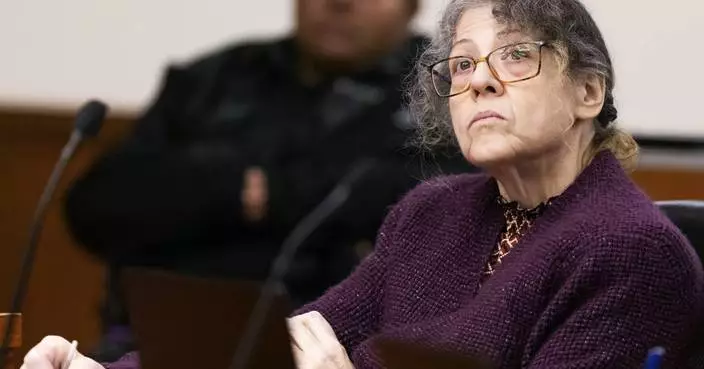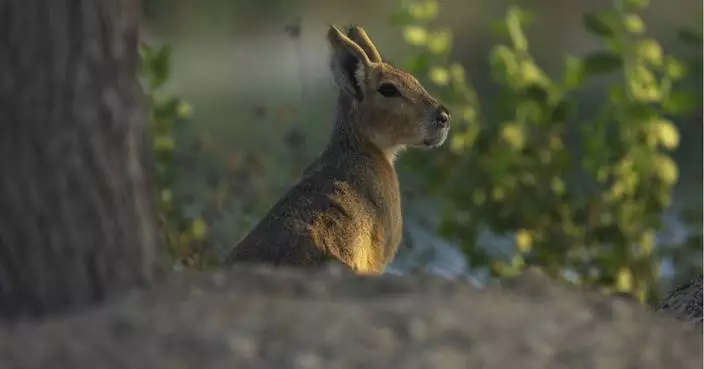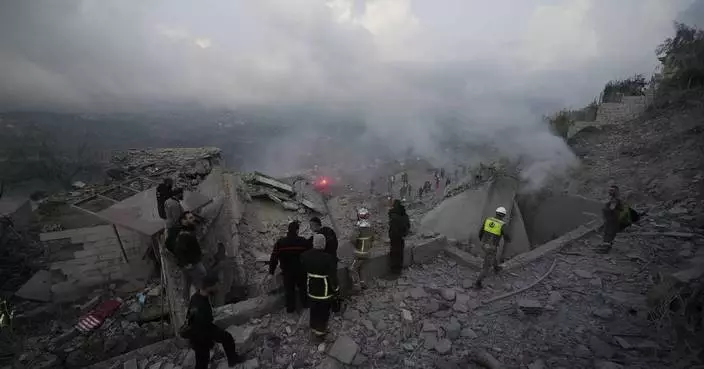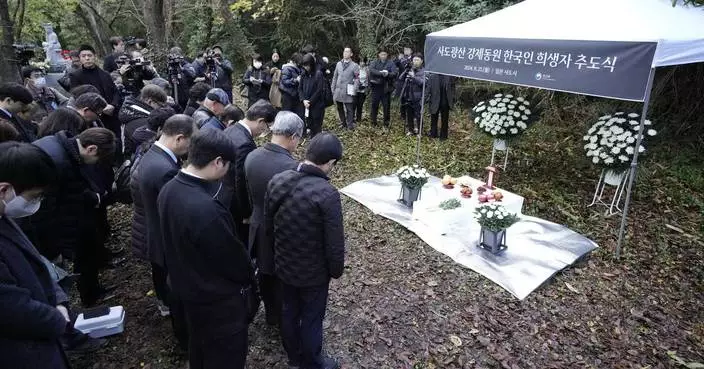OAKLAND, Calif.--(BUSINESS WIRE)--Nov 25, 2024--
e.l.f. Cosmetics Power Grip Primer is redefining what it means to be THE fan favorite.
This press release features multimedia. View the full release here: https://www.businesswire.com/news/home/20241124366198/en/
As the No. 1-selling beauty product, Power Grip Primer* knows how to inspire a fandom. That is why, starting today, e.l.f. Cosmetics, an e.l.f. Beauty (NYSE: ELF) brand, is talking directly to the broad community of sports fanatics. With a new multi-platform campaign, actors Joey King and Lucien Laviscount will take on the ultimate home-town playoffs - meeting the parents. On game day. On opposing sides.
Only Power Grip Primer can create a bond sticky enough between these would-be rivals, making everyone a winner.
“eyes. lips. face. fandom.” which makes its U.S. broadcast debut to an expected 22 million people during the iconic Macy’s Thanksgiving Day Parade, emphasizes e.l.f.’s vision to be a different kind of beauty company that disrupts norms, shapes culture and connects communities through positivity, inclusivity, and accessibility.
“An e.l.f. Power Grip Primer is sold every 3.5 seconds**. Fandom is fueled by an e.l.f.ing amazing community of undefeated enthusiasts. Our community is comprised of a beautiful tapestry of kindred spirits rallying around a shared passion, not because they fit into a box defined by someone else. We don’t allow stereotypes to limit the audience of our products,” said Kory Marchisotto, Chief Marketing Officer of e.l.f. Beauty. “Our house is open for every eye, lip and face – including sports lovers of all stripes.”
“No matter what you are a fan of - fandoms bring people together!” said King. “This campaign, like fandom, is encouraging everyone to express themselves and their individuality. But it’s also reminding us of the things that help us stick together - like a really great primer from e.l.f. or love for the home team!”
“Being a part of this campaign has been such a treat,” said Laviscount. “While I might not have ever expected to appear in a makeup commercial, I think my first being with e.l.f. is the best part! Doing something unexpected and entertaining, especially with a brand that’s known for disrupting norms, has been a highlight of my sports season.”
For the last two years, e.l.f. has run a winning play during The Big Game by speaking directly to the 48% of female fans. e.l.f. is now running the full field, speaking directly to every eye, lip, face, and fandom out there. No matter who you are rooting for, everyone is team e.l.f.
e.l.f. created the campaign in partnership with creative agency 72andSunny Amsterdam. Casting was led by creative marketing and communications agency SHADOW. Filmmaker Alex Buono directed the spot; he previously directed e.l.f.’s true crime parody “Cosmetic Criminals.”
“eyes. lips. face. fandom." will have high-visibility placements during key moments throughout the season.
Watch it here.
*e.l.f. Cosmetics claim based on data reported by NielsenIQ through its Scantrack Service for the Mass Market Color Cosmetics category for the 52-week period ending November 2, 2024 for the US xAOC channel according to e.l.f. Cosmetics custom product hierarchy. Copyright © 2024, Nielsen Consumer, LLC.
**Internal e.l.f. Account Insights, Global Consumption Data, (L52WE 11/9/24)
About e.l.f. Cosmetics
e.l.f. Beauty (NYSE: ELF) is fueled by a belief that anything is e.l.f.ing possible. We are a different kind of company that disrupts norms, shapes culture and connects communities through positivity, inclusivity and accessibility. e.l.f. Cosmetics, our global flagship brand, makes the best of beauty accessible to every eye, lip and face by bringing together the best of beauty, culture and entertainment. Our superpower is delivering universally appealing, premium quality products at accessible prices that are e.l.f. clean and vegan, all double-certified by Leaping Bunny and PETA as cruelty free and we have products made in Fair Trade Certified™ facilities. Learn more at www.elfcosmetics.com.


e.l.f. Cosmetics’ “eyes. lips. face. fandom.” stars Joey King and Lucien Laviscount in an entertainment-fueled sticky situation. (Photo: Business Wire)

e.l.f. Cosmetics’ “eyes. lips. face. fandom.” stars Joey King and Lucien Laviscount in an entertainment-fueled sticky situation. (Photo: Business Wire)

e.l.f. Cosmetics’ “eyes. lips. face. fandom.” stars Joey King and Lucien Laviscount in an entertainment-fueled sticky situation. (Photo: Business Wire)
SADO, Japan (AP) — Japanese officials have held a memorial ceremony near the Sado Island Gold Mines, listed in July as a UNESCO World Heritage site after Japan moved past years of historical disputes with South Korea and reluctantly acknowledged the mines' dark history. However, it has not offered an apology.
At these mines, hundreds of Koreans were forced to work under abusive and brutal conditions during World War II, historians say. Japanese officials at Sunday’s ceremony paid tribute to “all workers,” including Korean laborers who died at the mines, without acknowledging that they were forced laborers — part of what critics call a persistent policy of whitewashing Japan's history of sexual and labor exploitation before and during the war.
The ceremony, supposed to further mend wounds, renewed bad feelings between the two sides. South Korea boycotted Sunday's memorial service, citing unspecified disagreements with Tokyo over the event.
“As a resident, I must say (their absence) is very disappointing after all the preparations we made,” said Sado Mayor Ryugo Watanabe. “I wish we could have held the memorial with South Korean attendees.”
On Monday, nine families of Korean laborers, South Korea’s ambassador to Japan and other officials gathered at the mines to pay tribute to wartime Korean forced laborers. Participants in dark suits observed a moment of silence and offered white chrysanthemums in honor of the South Korean laborers, along with offerings such as dried fish, sliced apple and pears.
The Associated Press explains the Sado mines, their history and the controversy.
The 16th century mines on the island of Sado, about the size of the Pacific island of Guam, off the western coast of Niigata prefecture, operated for nearly 400 years beginning in 1601, and were once the world’s largest gold producer. They closed in 1989. During the Edo period, from 1603 to 1868, the mines supplied gold currency to the ruling Tokugawa shogunate.
Today, the site has been developed into a tourist facility and hiking site where visitors can learn about changes in mining technology and production methods while looking at the remains of mine shafts and ore dressing facilities.
Critics say the Japanese government only highlights the glory of the mines and covers up its use of Korean victims of forced labor and their ordeals. The mines were registered as a cultural heritage site in July after Japan agreed to include an exhibit on the conditions of Korean forced laborers and to hold a memorial service annually after repeated protests from the South Korean government.
A few signs have since been erected, indicating former sites of South Korean laborers’ dormitories. A city-operated museum in the area also added a section about Korean laborers, but a private museum attached to the main UNESCO site doesn't mention them at all.
At the UNESCO World Heritage Committee July meeting, the Japanese delegate said Tokyo had installed new exhibition material to explain the “severe conditions of (the Korean laborers’) work and to remember their hardship.”
Japan also acknowledged that Koreans were made to do more dangerous tasks in the mine shaft, which caused some to die. Those who survived also developed lung diseases and other health problems. Many of them were given meager food rations and nearly no days off and were caught by police if they escaped, historians say. But the Japanese government has refused to admit they were “forced labor.”
South Korea had earlier opposed the listing of the site for UNESCO World Heritage on the grounds that the Korean forced laborers used at the mines were missing from the exhibition. South Korea eventually supported the listing after consultations with Japan and Tokyo’s pledge to improve the historical background of the exhibit and to hold a memorial that also includes Koreans.
Historians say Japan used hundreds of thousands of Korean laborers, including those forcibly brought from the Korean Peninsula, at Japanese mines and factories to make up for labor shortages because most working-age Japanese men had been sent to battlefronts across Asia and the Pacific. About 1,500 Koreans were forced to work at the Sado mines, according to Yasuto Takeuchi, an expert on Japan’s wartime history, citing wartime Japanese documents.
The South Korean government has said it expects Japan to keep its pledge to be truthful to history and to show both sides of the Sado mines.
“The controversy surrounding the Sado mines exhibit underscores a deeper problem” of Japan’s failure to face up to its wartime responsibility and its growing “denialism” of its wartime atrocities, Takeuchi said.
All workers who died at the Sado mines were honored. That includes hundreds of Korean laborers who worked there during Japan’s 1910-1945 colonization of the Korean Peninsula.
At Sunday’s ceremony, four Japanese representatives, including central and local government officials and the head of the organizing group, thanked all mine workers for their sacrifice and mourned for those who died. None offered any apology to Korean forced laborers for their harsh treatment at the mines.
Attendants observed a moment of silence for the victims who died at the mines due to accidents and other causes.
The ceremony dredged up long-standing frustrations in South Korea.
About 100 people, including officials from Japan’s local and central government, as well as South Korean Foreign Ministry officials and the relatives of Korean wartime laborers, were supposed to attend. Because of South Korea's last-minute boycott, more than 20 seats remained vacant.
The Foreign Ministry said in a statement Saturday it was impossible to settle the disagreements between the governments before the planned event on Sunday, without specifying what those disagreements were.
There has been speculation that the South Korean boycott might have been due to the presence of Japanese parliamentary Vice Minister Akiko Ikuina at Sunday's ceremony. In August 2022, Ikuina reportedly visited Tokyo’s controversial Yasukuni Shrine, weeks after she was elected as a lawmaker. Japan’s neighbors view Yasukuni, which commemorates 2.5 million war dead including war criminals, as a symbol of Japan’s past militarism. Her visit could have been seen as a sign of a lack of remorse.
Some South Koreans criticized the Seoul government for throwing its support behind an event without securing a clear Japanese commitment to highlight the plight of Korean laborers. There were also complaints over South Korea agreeing to pay for the travel expenses of Korean victims’ family members who were invited to attend the ceremony.
Critics say Japan’s government has long been reluctant to discuss wartime atrocities. That includes what historians describe as the sexual abuse and enslavement of women across Asia, many of them Koreans who were deceived into providing sex to Japanese soldiers at frontline brothels and euphemistically called “comfort women,” and the Koreans who were mobilized and forced to work in Japan, especially in the final years of World War II.
Korean compensation demands for Japan's atrocities during its brutal colonial rule have strained relations between the two Asian neighbors, most recently after a 2018 South Korean Supreme Court ruling ordered Japanese companies to pay damages over their wartime forced labor.
Japan’s government has maintained that all wartime compensation issues between the two countries were resolved under the 1965 normalization treaty. Ties between Tokyo and Seoul have improved recently after Washington said their disputes over historical issues hampered crucial security cooperation as China’s threat grows in the region.
South Korean conservative President Yoon Suk Yeol announced in March 2023 that his country would use a local corporate fund to compensate forced labor victims without demanding Japanese contributions. Japan’s then-Prime Minister Fumio Kishida later expressed sympathy for their suffering during a Seoul visit. Security, business and other ties between the sides have since rapidly resumed.
Japan’s whitewashing of wartime atrocities has risen since the 2010s, particularly under the past government of revisionist leader Shinzo Abe. For instance, Japan says the terms “sex slavery” and “forced labor” are inaccurate and insists on the use of highly euphemistic terms such as “comfort women” and “civilian workers” instead.
Takeuchi, the historian, said listing Japan’s modern industrial historical sites as a UNESCO World Heritage is a government push to increase tourism. The government, he said, wants “to commercialize sites like the Sado mines by beautifying and justifying their history for Japan’s convenience.”
Associated Press writer Kim Tong-hyung in Seoul, South Korea, contributed to this report.
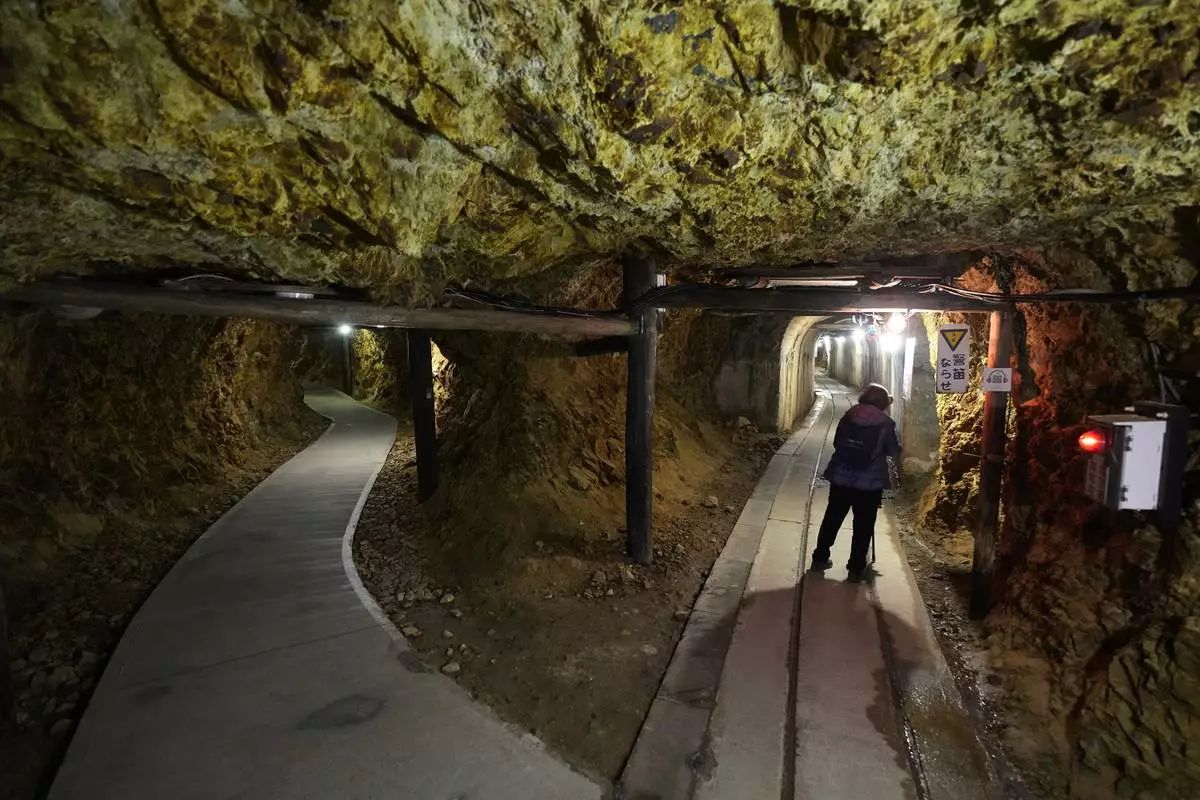
A visitor walk through tunnels at Sado Kinzan Gold Mine historic site in Sado, Niigata prefecture, Japan, Sunday, Nov. 24, 2024. (AP Photo/Eugene Hoshiko)
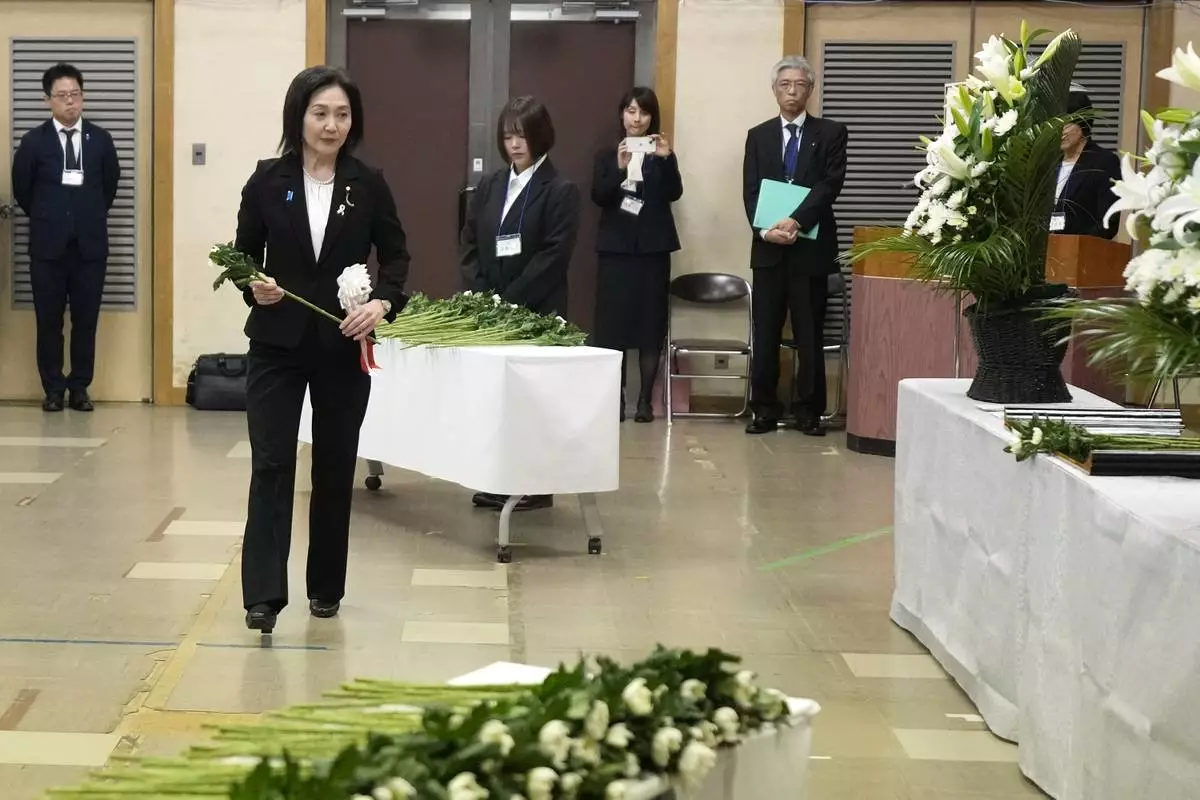
Akiko Ikuina, Parliamentary Vice-Minister for Foreign Affairs, offer a flower on behalf of the government during a memorial ceremony for the Sado Island Gold Mine in Sado, Niigata prefecture, Japan, Sunday, Nov. 24, 2024. (AP Photo/Eugene Hoshiko)
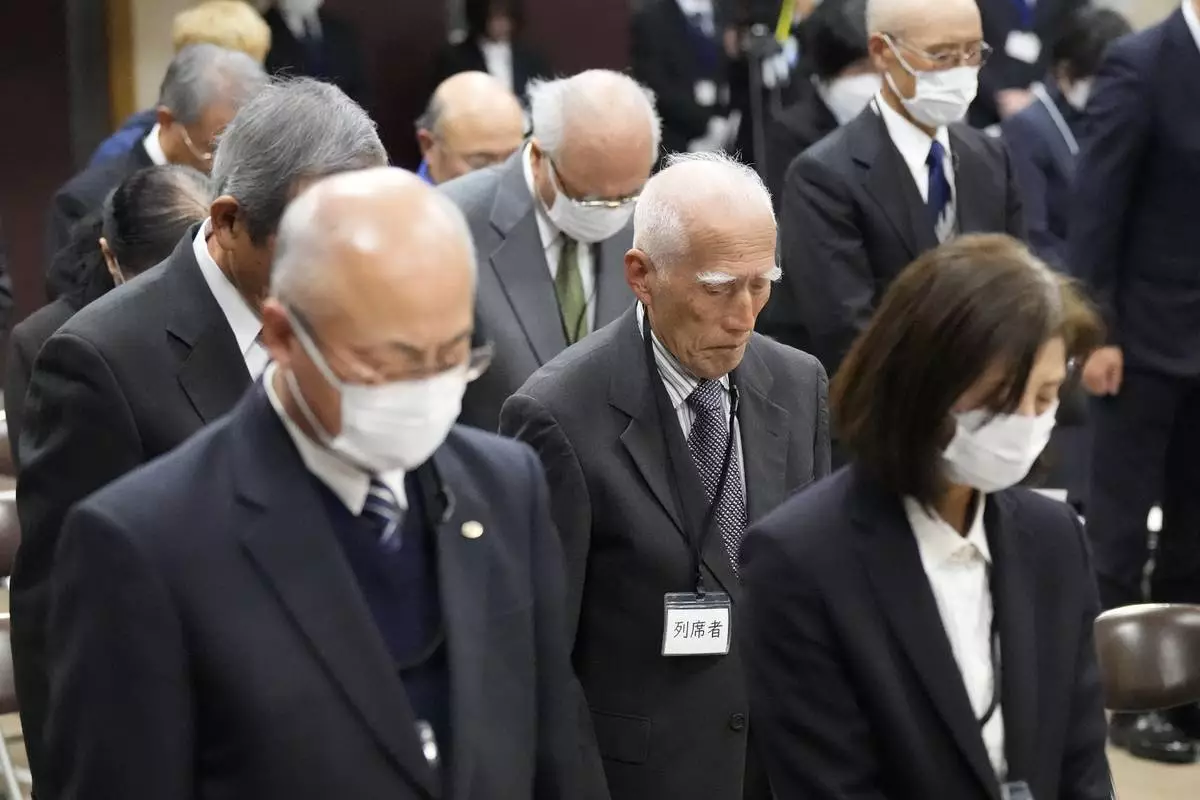
Guests offer a moment of silence during a memorial ceremony for the Sado Island Gold Mine in Sado, Niigata prefecture, Japan, Sunday, Nov. 24, 2024. (AP Photo/Eugene Hoshiko)

Akiko Ikuina, Parliamentary Vice-Minister for Foreign Affairs, offer a flower on behalf of the government during a memorial ceremony for the Sado Island Gold Mine in Sado, Niigata prefecture, Japan, Sunday, Nov. 24, 2024. (AP Photo/Eugene Hoshiko)
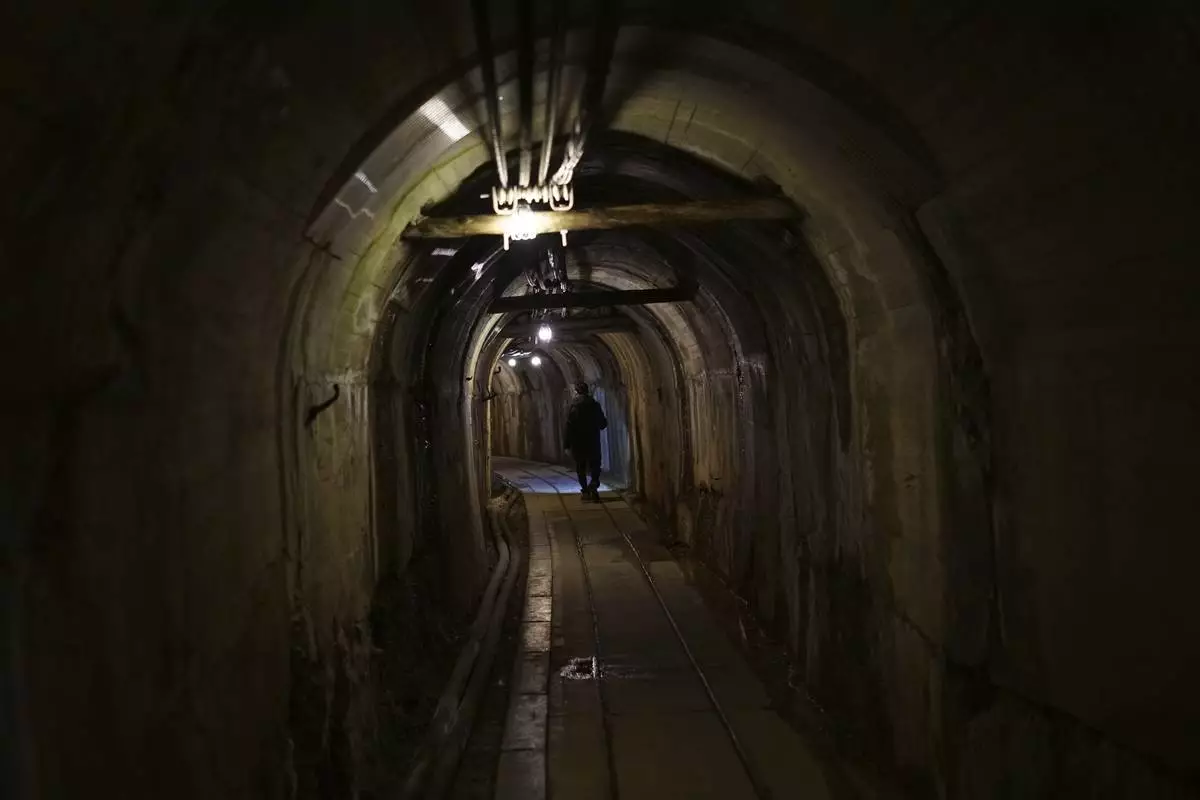
A staff walks through a tunnel at Sado Kinzan Gold Mine historic site in Sado, Niigata prefecture, Japan, Sunday, Nov. 24, 2024. (AP Photo/Eugene Hoshiko)
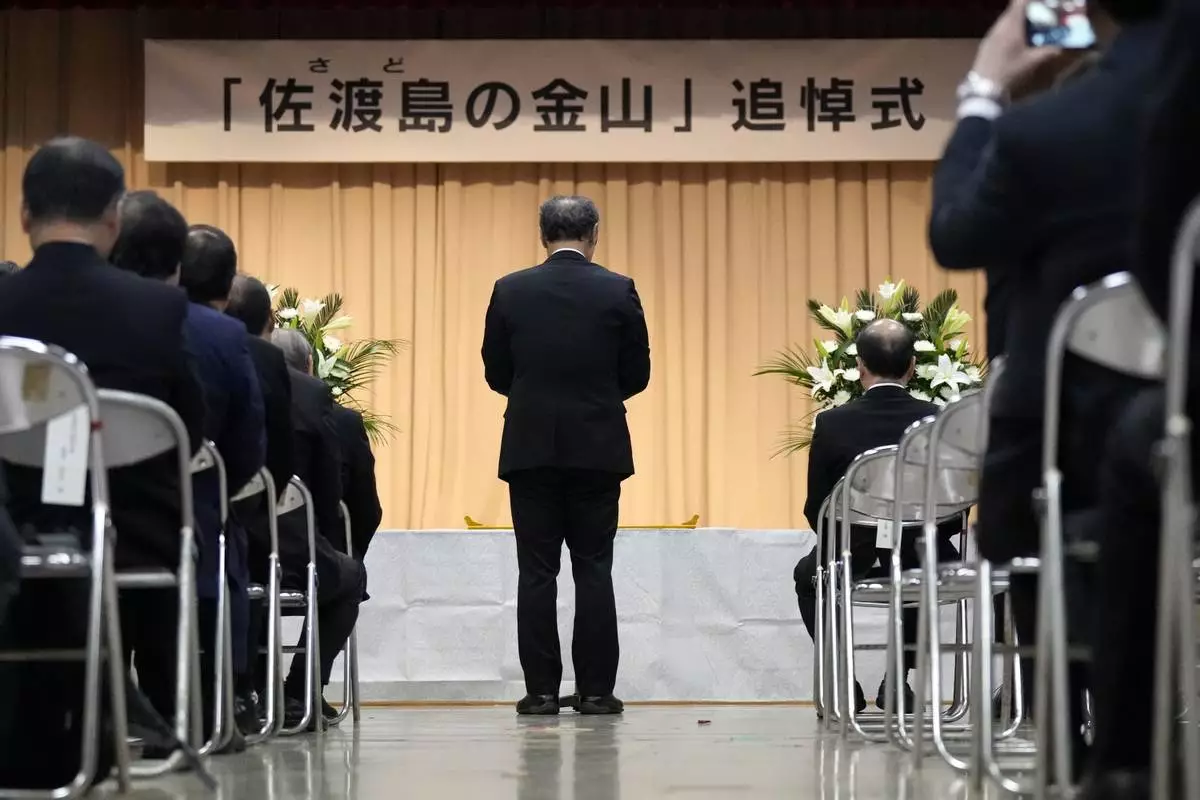
Mayor of Sado City Ryugo Watanabe delivers a speech during a memorial ceremony for the Sado Island Gold Mine in Sado, Niigata prefecture, Japan, Sunday, Nov. 24, 2024. (AP Photo/Eugene Hoshiko)
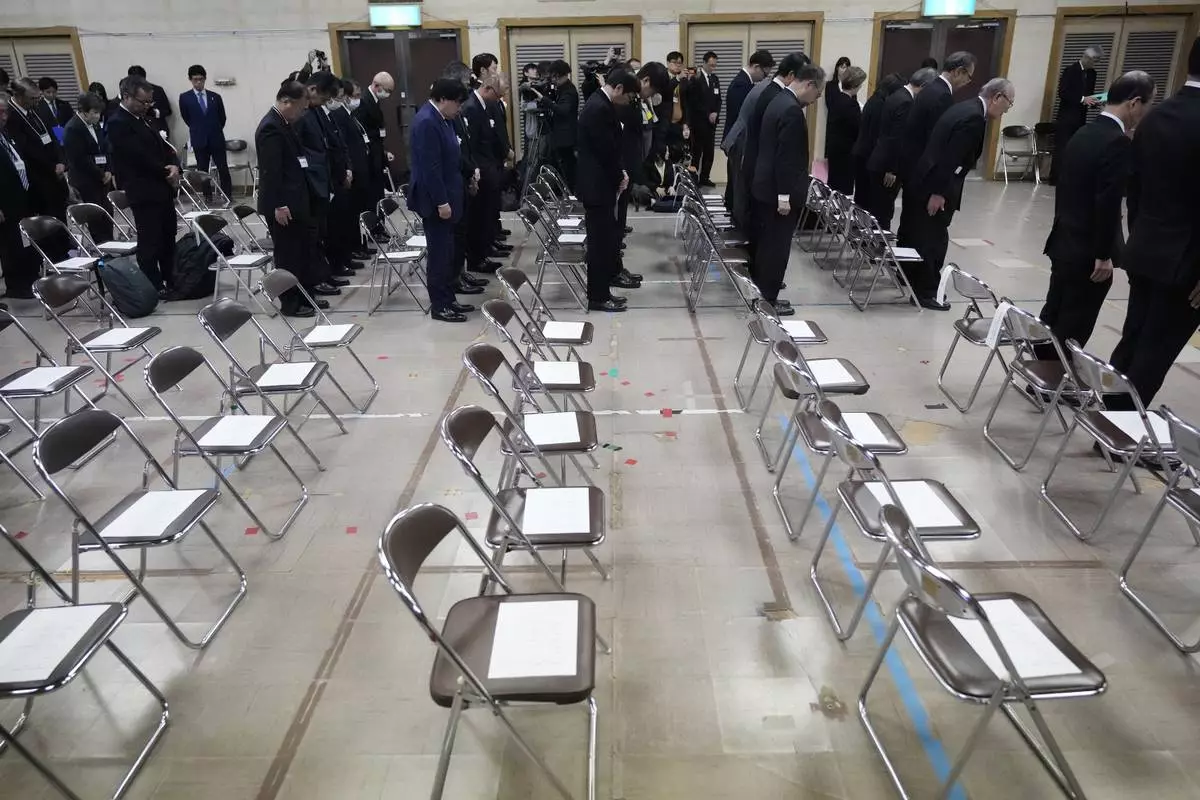
Guests offer a moment of silence during a memorial ceremony for the Sado Island Gold Mine in Sado, Niigata prefecture, Japan, as several seats reserved for South Korean guests remained empty Sunday, Nov. 24, 2024. (AP Photo/Eugene Hoshiko)
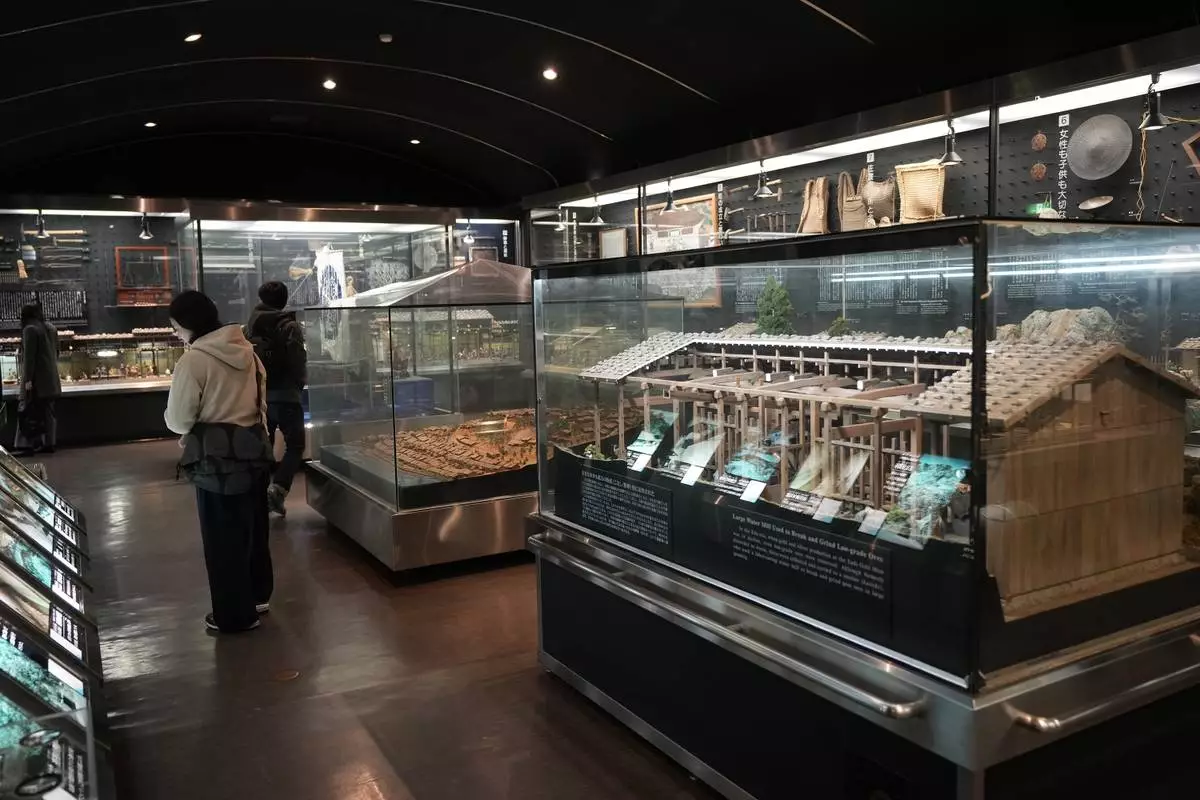
Visitors look at the display at Sado Kinzan Gold Mine historic site in Sado, Niigata prefecture, Japan, Saturday, Nov. 23, 2024. (AP Photo/Eugene Hoshiko)
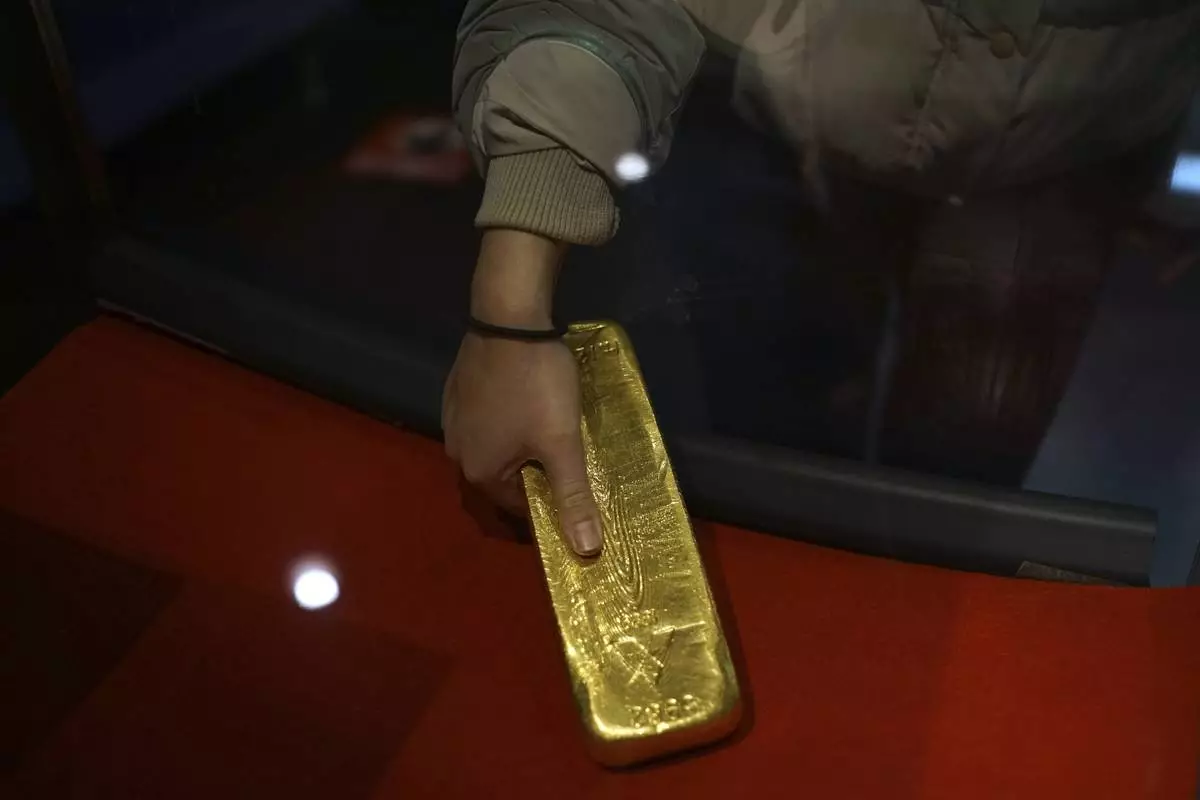
A visitor tries to pick up a gold bar at Sado Kinzan Gold Mine historic site in Sado, Niigata prefecture, Japan, Saturday, Nov. 23, 2024. (AP Photo/Eugene Hoshiko)
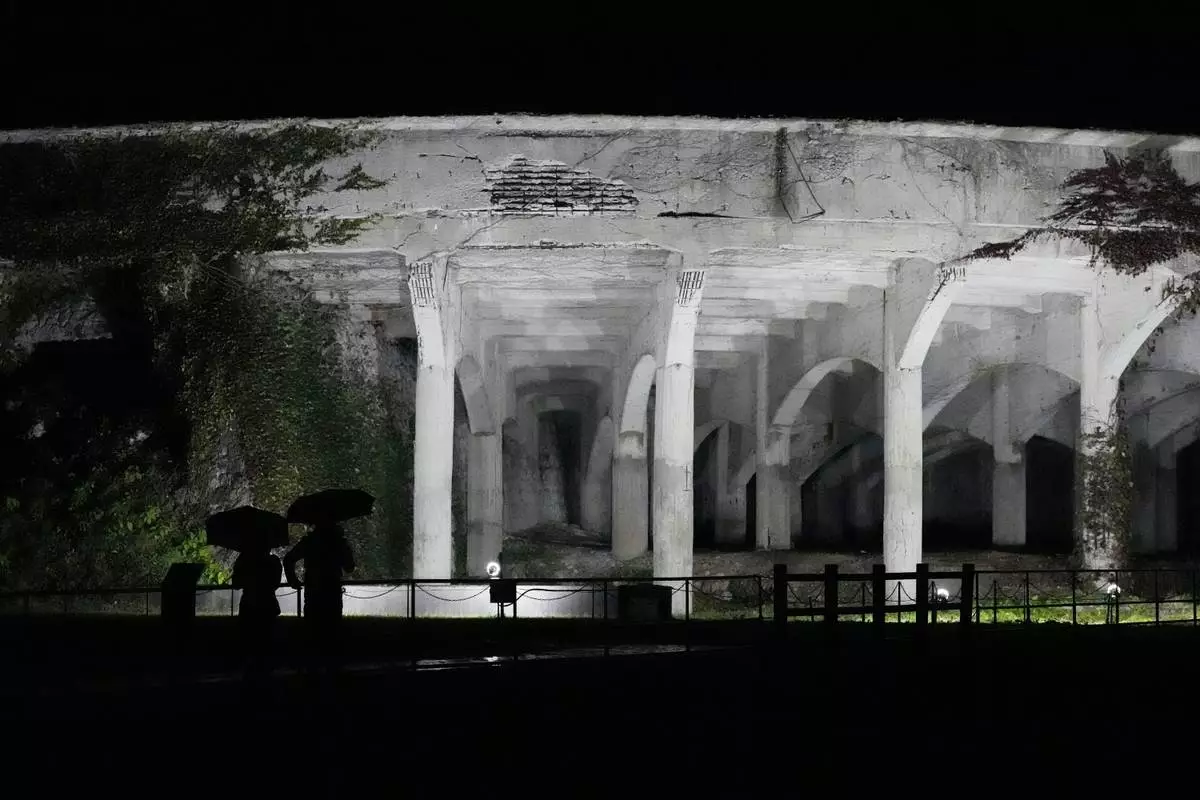
One of the industrial heritages Kitazawa Flotation Plant, a processing gold ore plant, is illuminated in Sado, Niigata prefecture, Japan, Saturday, Nov. 23, 2024. (AP Photo/Eugene Hoshiko)
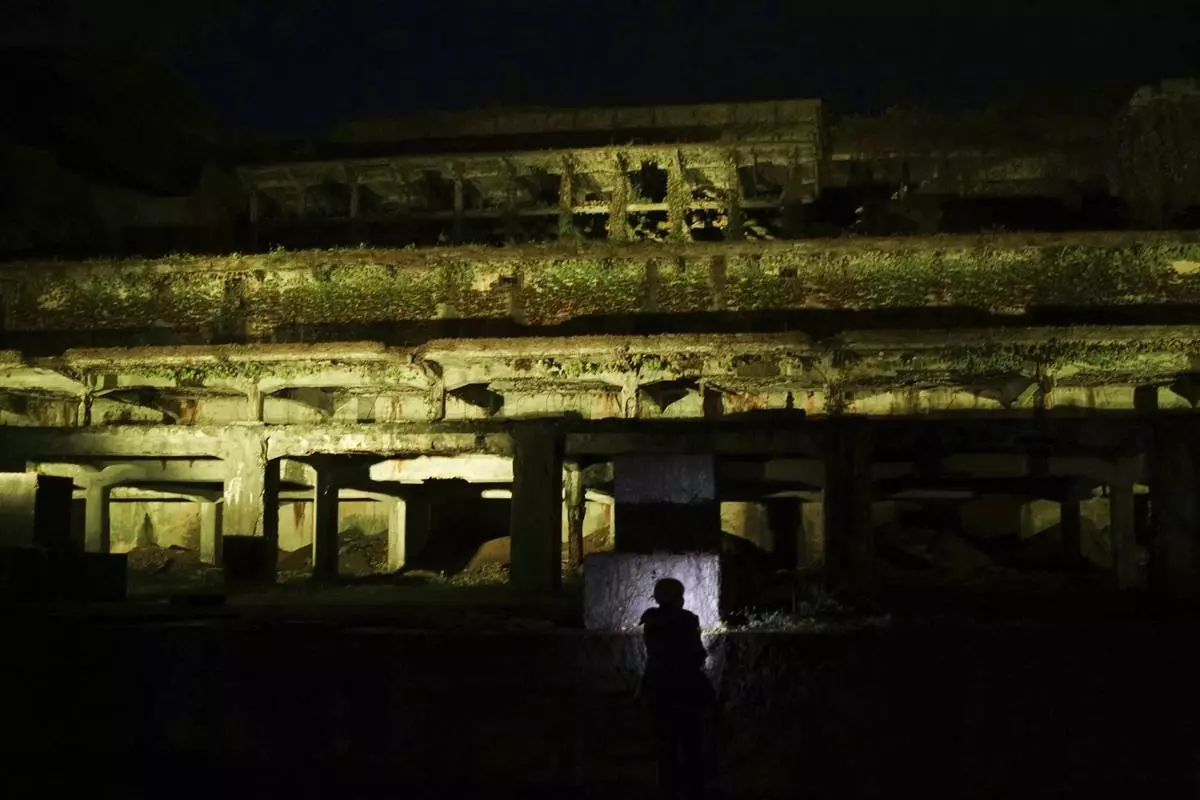
One of the industrial heritages Kitazawa Flotation Plant, a processing gold ore plant, is illuminated in Sado, Niigata prefecture, Japan, Saturday, Nov. 23, 2024. (AP Photo/Eugene Hoshiko)
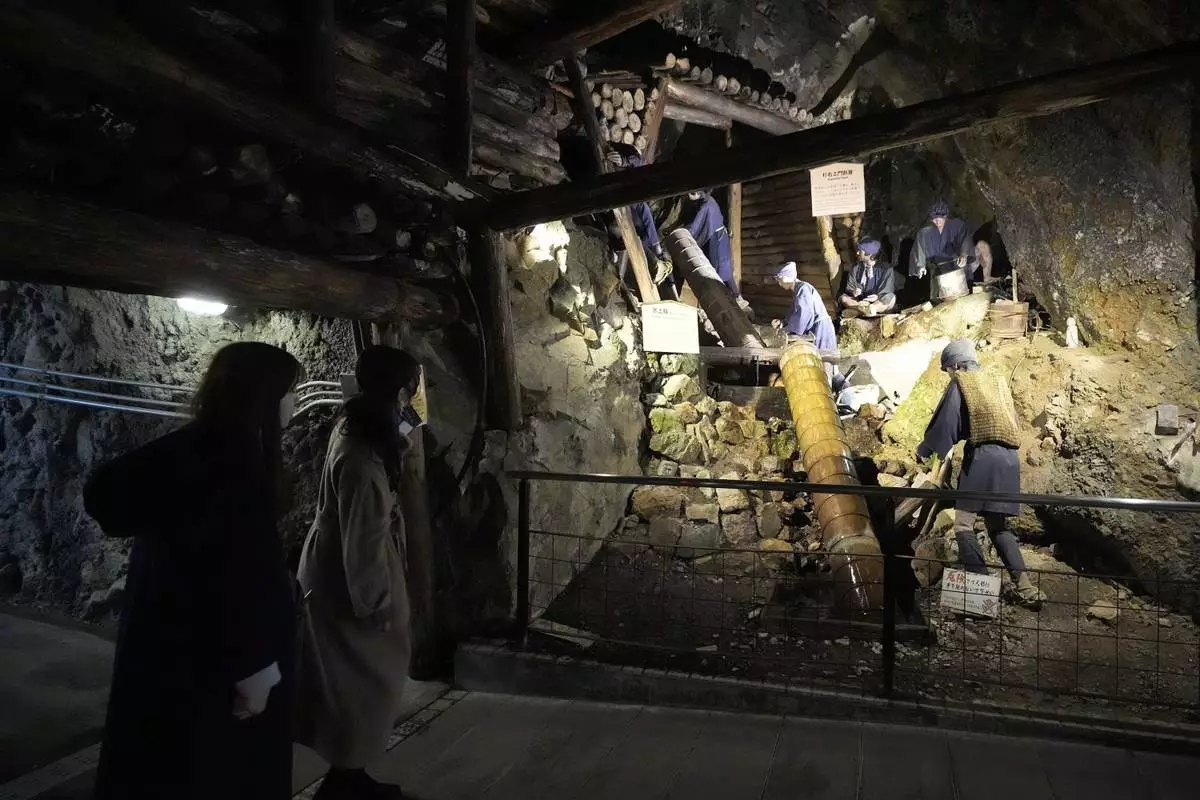
Visitors look at display at Sado Kinzan Gold Mine historic site in Sado, Niigata prefecture, Japan, Saturday, Nov. 23, 2024. (AP Photo/Eugene Hoshiko)

Visitors look at display at Sado Kinzan Gold Mine historic site in Sado, Niigata prefecture, Japan, Saturday, Nov. 23, 2024. (AP Photo/Eugene Hoshiko)
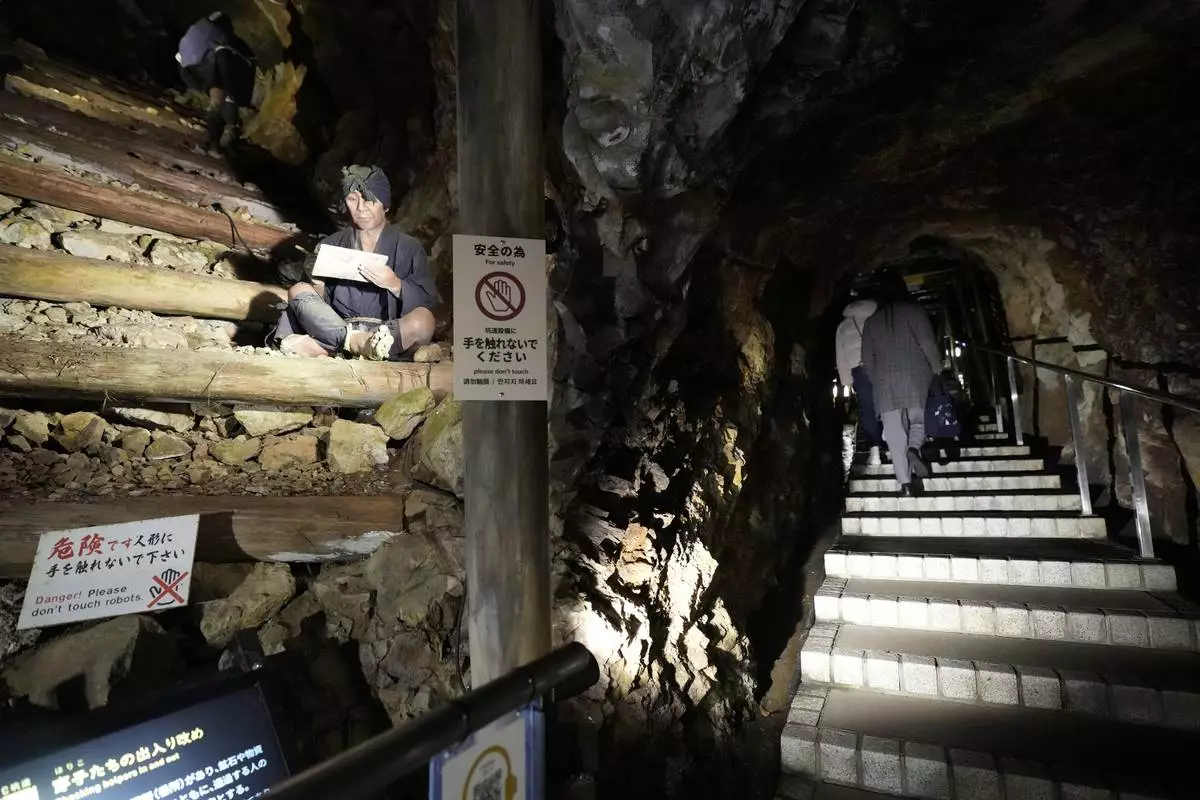
Visitors visit at Sado Kinzan Gold Mine historic site in Sado, Niigata prefecture, Japan, Saturday, Nov. 23, 2024. (AP Photo/Eugene Hoshiko)

Visitors walk though a tunnel at Sado Kinzan Gold Mine historic site in Sado, Niigata prefecture, Japan, Saturday, Nov. 23, 2024. (AP Photo/Eugene Hoshiko)
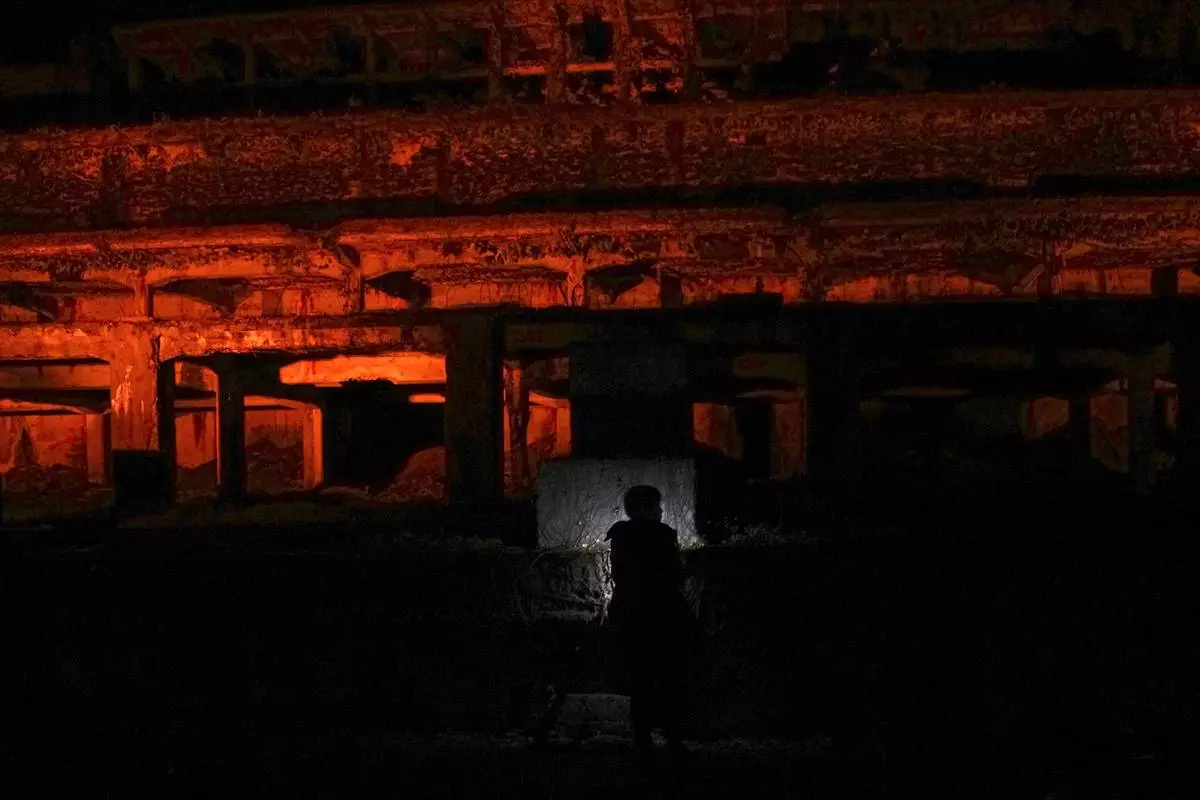
One of the industrial heritages Kitazawa Flotation Plant, a processing gold ore plant, is illuminated in Sado, Niigata prefecture, Japan, Saturday, Nov. 23, 2024. (AP Photo/Eugene Hoshiko)
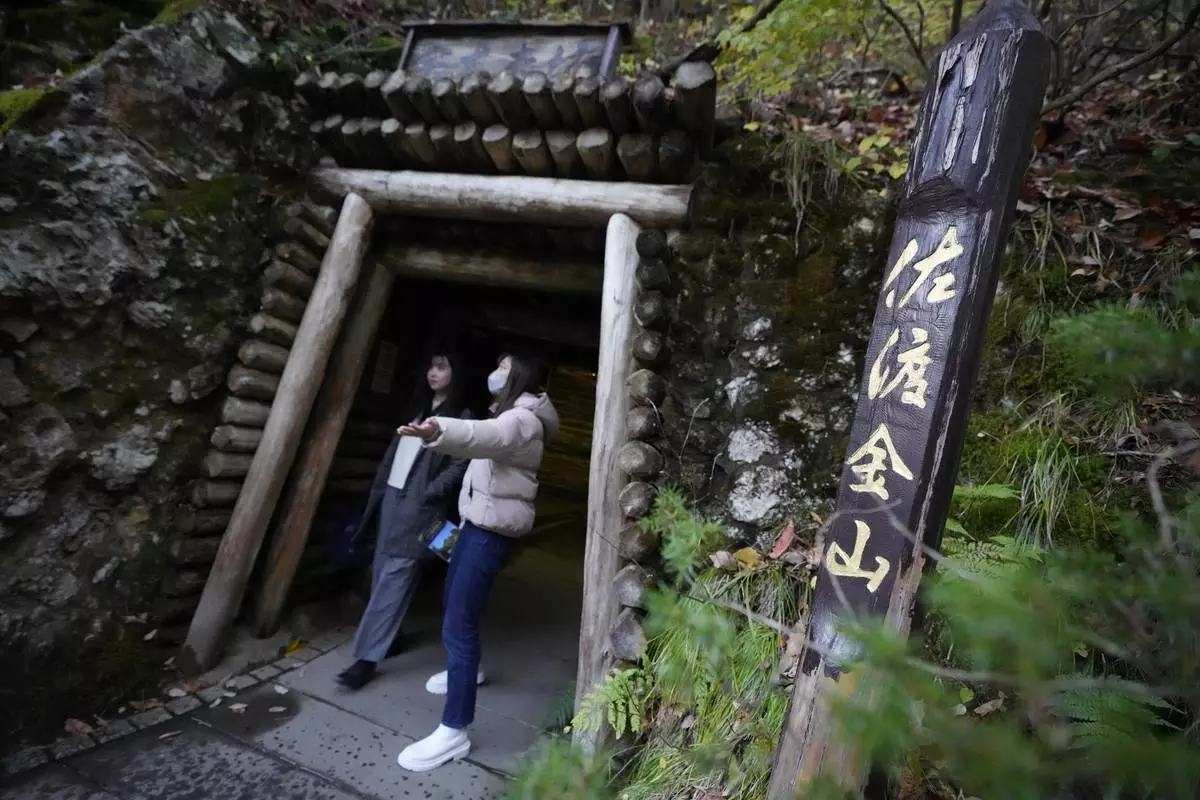
Visitors walks out Sado Kinzan Gold Mine historic site in Sado, Niigata prefecture, Japan, Saturday, Nov. 23, 2024. (AP Photo/Eugene Hoshiko)

Remains of Japan’s Sado gold mine are seen on Sado Island, northern Japan, on Aug. 19, 2021. (Keiji Uesho/Kyodo News via AP)
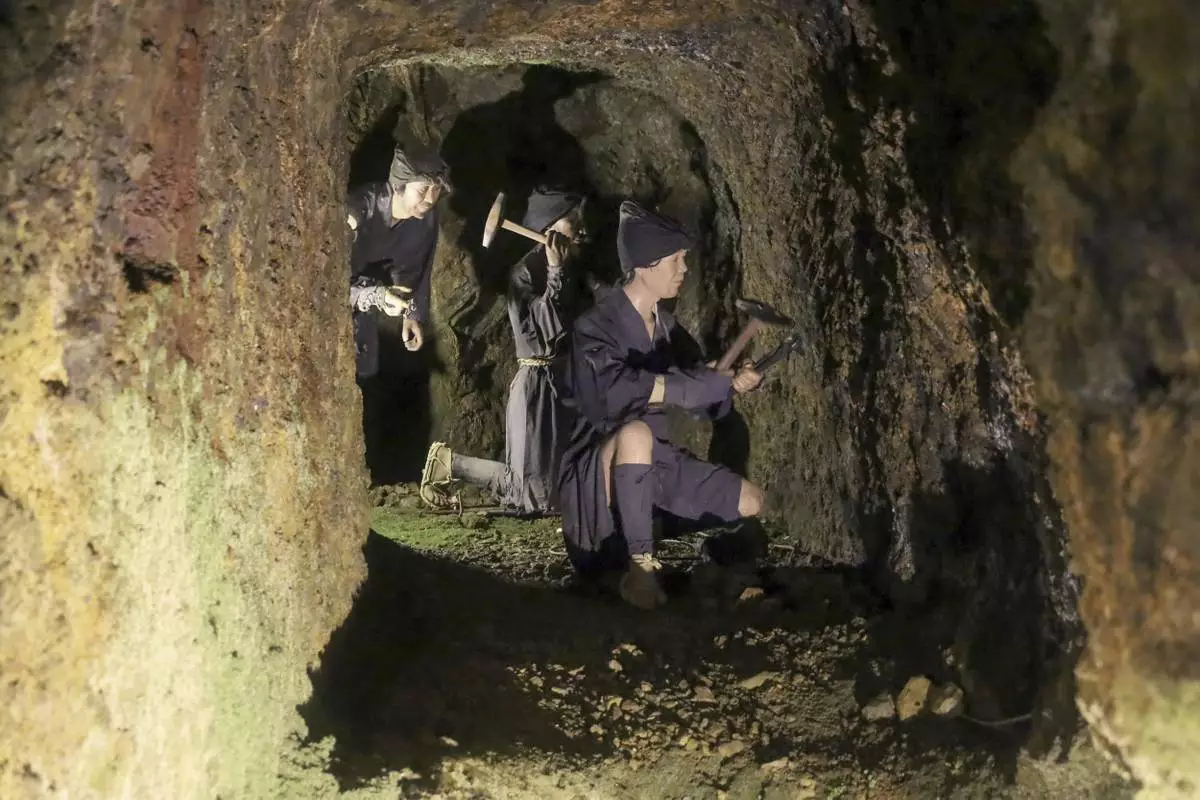
Mannequins enacting a mining scene are seen inside remains of the Sado gold mine on Sado Island, northern Japan, on July 4, 2024. (Atsushi Watanabe/Kyodo News via AP)
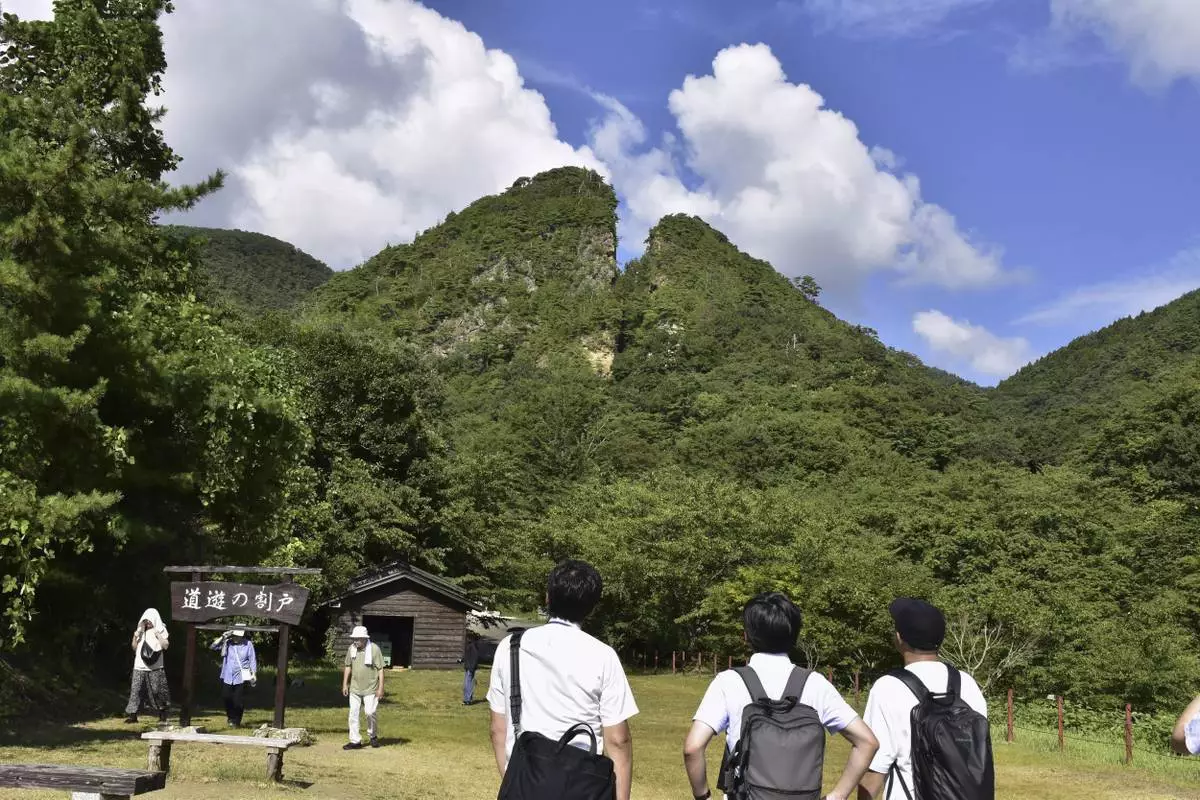
People visit remains of a Sado gold mine are seen on Sado Island, northern Japan, on Aug. 26, 2024. (Yasufumi Fujita/Kyodo News via AP)



























